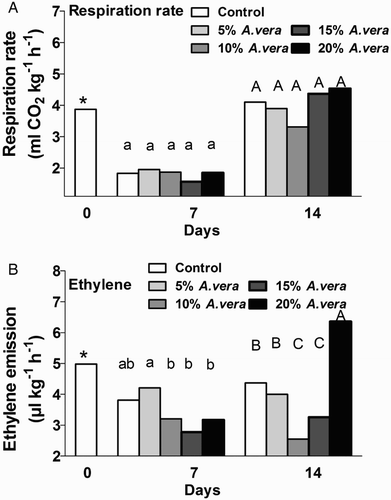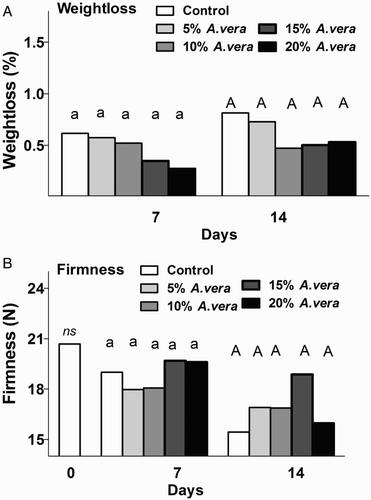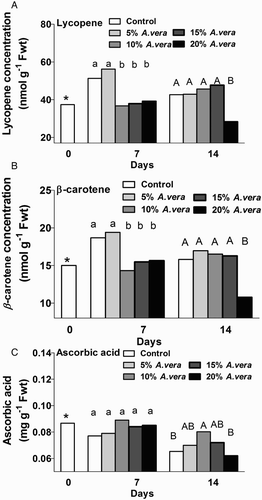Figures & data
Table 1. Effect of A. vera coating on tomato fruit decay during storage (11 oC, 90% RH).
Figure 1. Respiration rate (A) and ethylene emission (B) during storage (11 °C, 90% RH) of control and A. vera-coated tomatoes. Values are the means of six samples (n = 6) per treatment and storage period. Values followed by the same letter in each column do not differ significantly (P < 0.05). * or ns indicate significance or not, respectively, among controls through storage period.

Figure 2. Effect of A. vera coating on fruit weight loss (A) and firmness (B) of tomatoes during storage (11 °C, 90% RH). Values are the means of six samples (n = 6) per treatment and storage period. Values followed by the same letter in each column do not differ significantly (P < 0.05). * or ns indicate significance or not, respectively, among controls through storage period.

Table 2. Effect of A. vera coating on fruit total soluble solids (TSS, in oBrix), titratable acidity (TA, in % citric acid) and ripening index (TSS/TA ratio) during storage (11 oC, 90% RH).
Figure 3. Effect of A. vera coating on β-carotene (nmol g−1 f Fwt) (A), lycopene (nmol g−1 Fwt) (B) and ascorbic acid (mg g-1 Fwt) (CSBOLDSTARTCCSBOLDEND) content in tomato fruit during storage (11 oC, 90% RH). Values are the means of six pooled samples (n = 6) per treatment and storage period. Values followed by the same letter in each column do not differ significantly (P < 0.05). * Or ns indicate significance or not, respectively, among controls through storage period.

Figure 4. Effect of A. vera coating on total phenols content (GAE μmol g−1 Fwt) (CSBOLDSTARTACSBOLDEND) and antioxidant activity (mg trolox g-1 Fwt) (B, C) in tomato fruit during storage (11 °C, 90% RH). Values are the means of six pooled samples (n = 6) per treatment and storage period. Values followed by the same letter in each column do not differ significantly (P < 0.05). *Or ns indicate significance or not, respectively, among controls through storage period.

